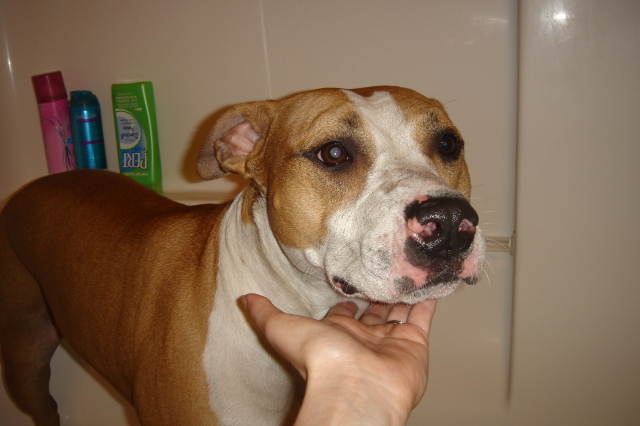QuestionHello,
I have a questions about the use of an E-collar and prong collar with regards to obedience puppy training, conditioning, correcting, and teaching. There are different thoughts of the E-collars and prongs when it come to training. Some say use it only for sport training; others say use it for everything. Many trainers say the problem is the timing when giving the correction, sometimes there is a human delay. I think the e-collar is a safer way of training, more humane when the human is trained on how to use it. I have used a pinch collar before on a GSD, there is a lot of theories on the "pull and jerk" or "yank and crank" methods of training. I am not a fan of the food bribing training, or Kholer yanking methods. With the food training it is my understanding that the dog will become conditioning to do what you ask when there is only food. I know that you should switch up your positive methods each time when you are teaching your dog. IE: give a treat one time, praise one time, and a toy when the dog sits, stays, or comes. Now on the other hand I am NOT a supporter of the choke chain and some what hesitant on the prong. I understand the prong is safer to use and is compared to a mothers bite. What are you thought regarding E- Collars or prong collars and at what age is it appropriate to introduce your dog to the collar. My dog is 3 months and I am just doing some socialization, and motivational obedience with food and toys. When should I introduce a collar for correction for training obedience? What more can I do to help teach the dog what I want him to do?
Thank you for your time and advice.
John
AnswerThe prong and choke collars shouldn't be used before 4-5 months. The E-collar should never be used to teach basic obedience. It is a specialized tool for off lead work. I don't like the prong collar either. Nobody should use it without hands on help fitting it from somebody that understands how it should be done.
I really think you may need to read more on positive methods.
The Cultural Clash by Jean Donaldson, 1996
Excel-crated Learning by Pamela Reid, 1996
Don't Shoot the Dog, by Karen Pryor, 1996
Surviving Your Dog's Adolescence, by Carol Lea Benjamin, 1993
Second Hand dog, by Carol Lea Benjamin, 1988
Dog Problems, by Carol Lea Benjamin, 1989
Super Puppy, by Peter J. Vollmer, 1988
HELP, Mt dog Has an Attitude, by Gwen Bohnenkamp, 1994
Owners' Guide Better Behavior in Dogs and Cats, by William Campbell, 1989
What All Good dogs Should Know, By Wendy Vollmer, 1991
How to Raise a Dog When Nobody is Home, Jerry Kilmer, 1991

 Dog breed?
QuestionQUESTION: Hi Nancy,
I am attaching an image of
Dog breed?
QuestionQUESTION: Hi Nancy,
I am attaching an image of
 puppy behavior
Question
Cooper and Guy
Hi, thanks so much for reading
puppy behavior
Question
Cooper and Guy
Hi, thanks so much for reading
 Eye problems w/ schnauzers
Question
Mini parti schnauzer
We currently have a 14 yr
Eye problems w/ schnauzers
Question
Mini parti schnauzer
We currently have a 14 yr
 Temperature before birth
QuestionQUESTION: My female cheweenie is on day 52 of h
Temperature before birth
QuestionQUESTION: My female cheweenie is on day 52 of h
 pomeranian
Question
the pomerainan
hey, i have a pom who is 3years
pomeranian
Question
the pomerainan
hey, i have a pom who is 3years